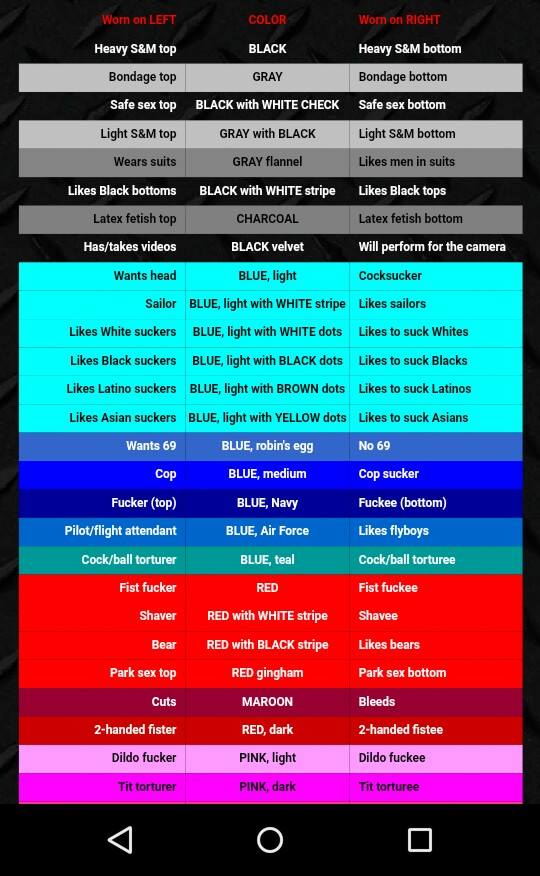Hanky Code Introduction
Concept
The Hanky Code is a longstanding tradition and means of communication within the LGBT community. It is also known as flagging. The hanky code is a color-coded system in which an individual wears a specific colored handkerchief in their back pocket(s) to inform others of their sexual interests and roles. Placing a hanky in the left pocket indicates the wearer’s alignment with a top/dominant role, while a hanky in the right pocket indicates the wearer’s alignment with a bottom/submissive role.
Origin
The hanky code is thought to have originated with gold rush settlers in San Francisco in the mid-19th century. A shortage of female dance partners meant men danced together, using hankies to indicate their role as lead or follow. Hankies were worn tied around the arm, tucked into the belt or the back pocket. Sources differ on whether the lead wore a handkerchief on the left, or a blue handkerchief. Additionally, the follow may have worn a handkerchief on the right, or a red handkerchief. In either case, the use of placement and color to communicate roles and preferences form the basic aspects of the hanky code that is known today.
Late-20th Century
During the 1960s and 1970s, gay men wore hankies not only to signify their roles, but also their sexual preferences and fetishes. The hanky code became an established way of identifying, at a glance, compatibility and interest. Initially the colors were limited to black, blue, yellow, red and white, which were the colors that most handkerchief companies produced. From the 1980s onward, the hanky code has expanded to a broader spectrum of colors and materials than originally conceived.
Modern
With the advent of the internet, people were better able to connect and explore, express and discover new or existing fetishes. The hanky code expanded to encompass these fetishes, communicating interests through new colors and even new fabrics, such as leather or lace. The color system has also expanded beyond hankies to other accessories. It is not uncommon to have harnesses, singlets, or leather articles in a color derived from the hanky code to indicate a desirable fetish or sexual interest.
Sociological Aspect
The Hanky Code is a prime example of a theory in sociology called Symbolic Interaction (SI). Symbolic Interaction is defined by applying meaning and value to people, places or things. It is a counterpart of instincts where we are born knowing certain information. SI is learned through experiences. For example, we are not born with the knowledge that Gucci is a high-end brand. Similarly, we are not born with the knowledge that red can symbolize fisting.


